Abstract
1. The observation that the detection threshold for a square-wave grating depends only on that of its fundamental was confirmed by showing that adapting to the fundamental spatial frequency caused elevation of the square-wave threshold, to the same extent as the fundamental threshold was elevated by the same adapting pattern. Adapting to the third harmonic frequency had no effect on the square-wave threshold.
2. Adapting to a square-wave grating should elevate the thresholds for both the fundamental and third harmonic frequencies (Blakemore & Campbell, 1969), and the amount of elevation at each frequency should be predictable from the contrast of that frequency within the square-wave.
3. It was found, however, that both the fundamental and third harmonic, when present in the square-wave, were much less effective as suprathreshold adapting stimuli than would be predicted from their effects when viewed in isolation.
4. Adapting to a mixture of two sinusoidal gratings (with 3:1 frequency ratio) demonstrated that the fall in adapting power was not due to the higher harmonics of the square-wave nor to nonlinearities in the stimulus display. Similar effects were found when the phase relations of the adapting gratings were changed, showing that the interaction is not a special property of square-waves or of edges.
5. It is suggested that the spatial frequency channels subserving the fundamental and third harmonic frequencies inhibit each other when the patterns are some way suprathreshold. At or near threshold, there is no such reciprocal inhibition.
Full text
PDF
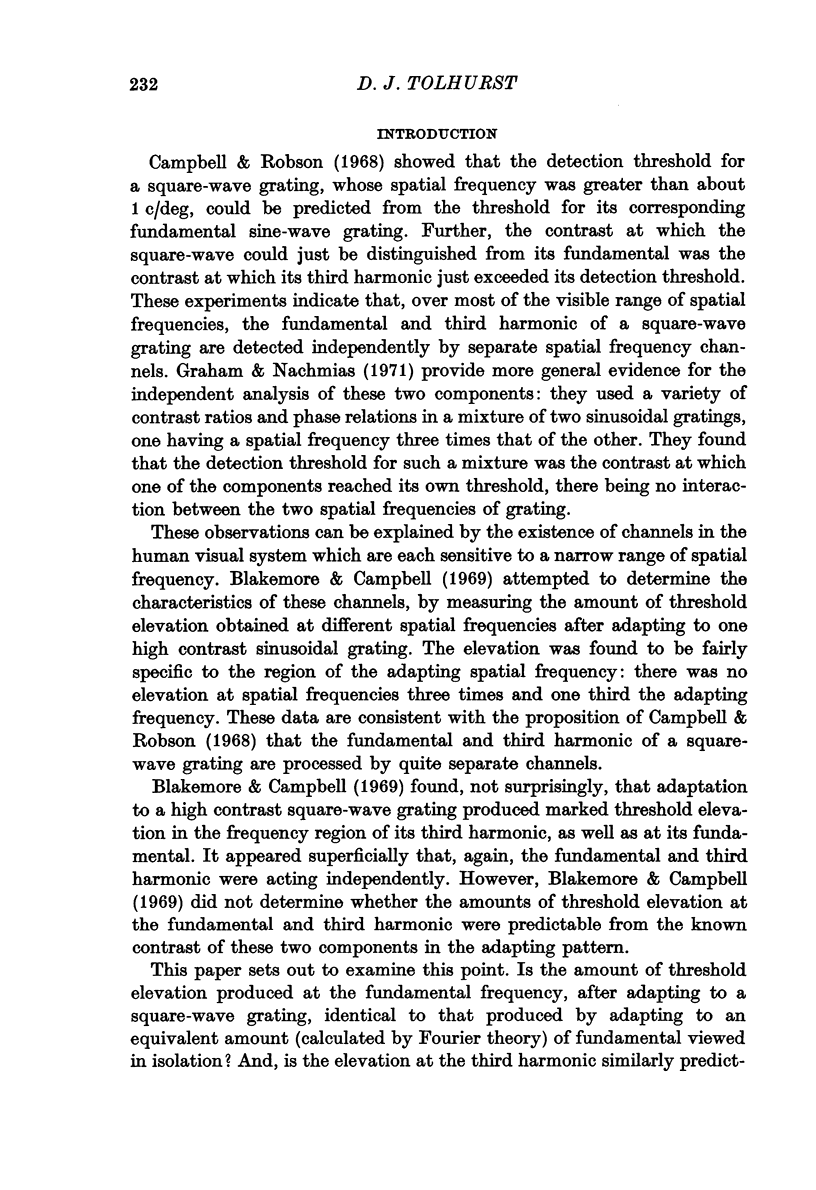
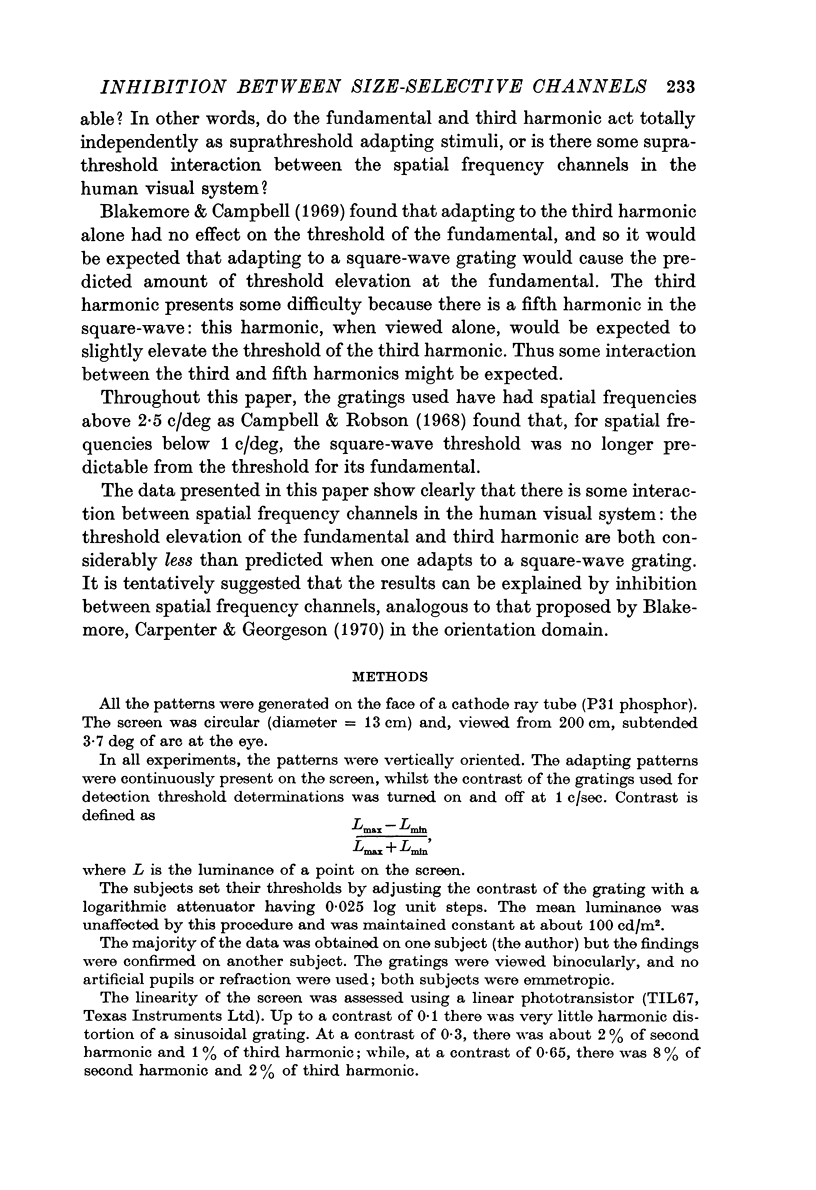
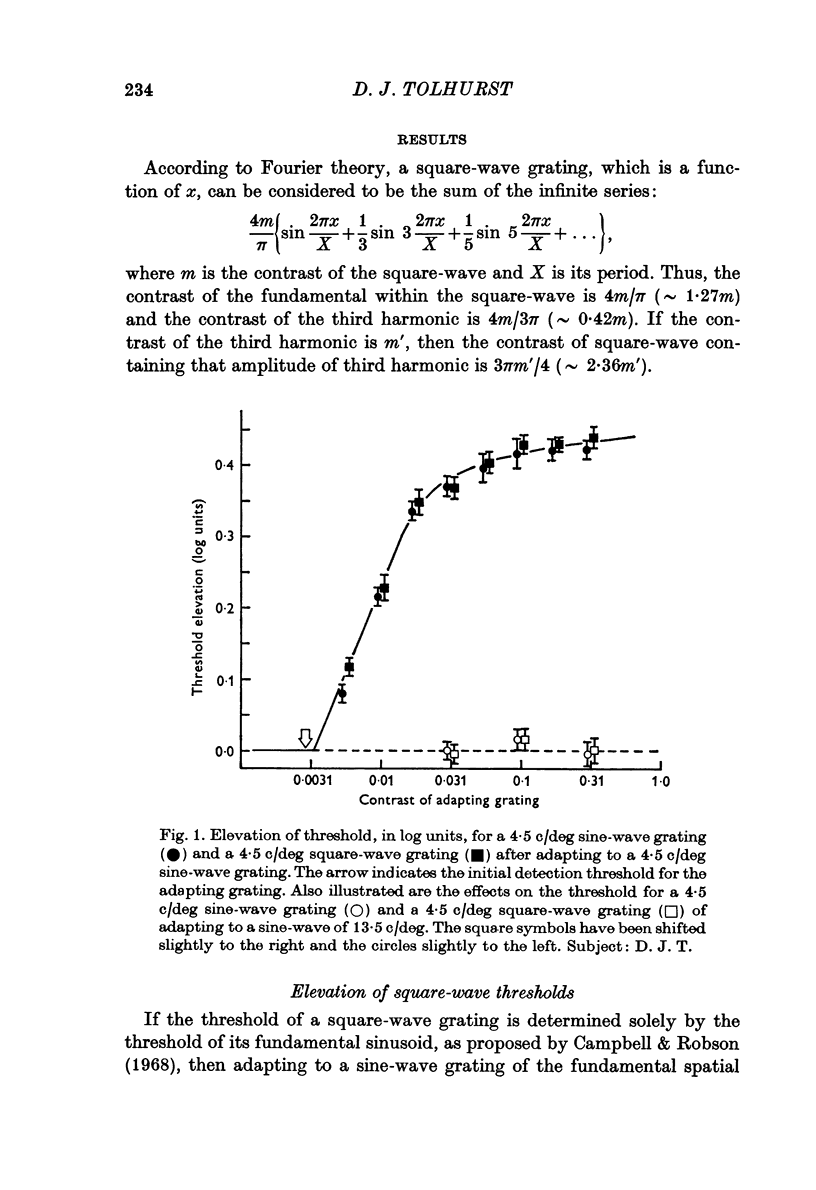


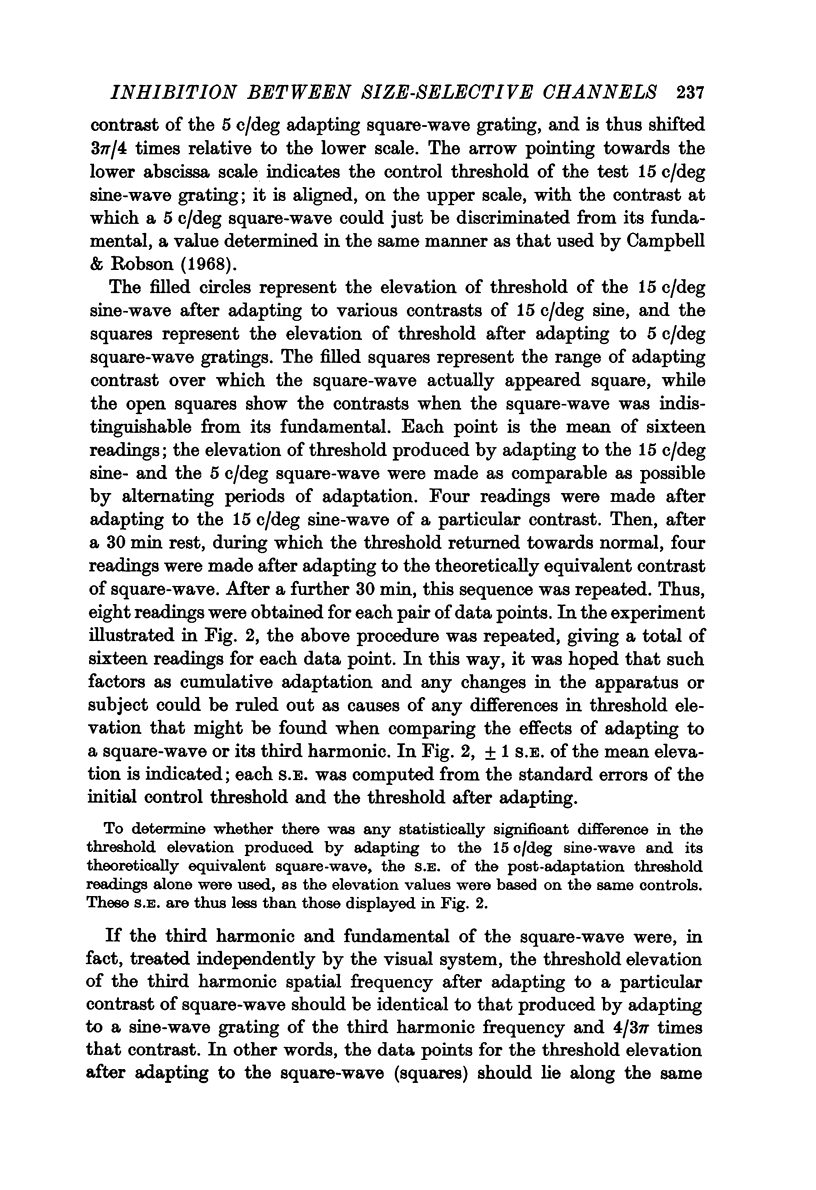

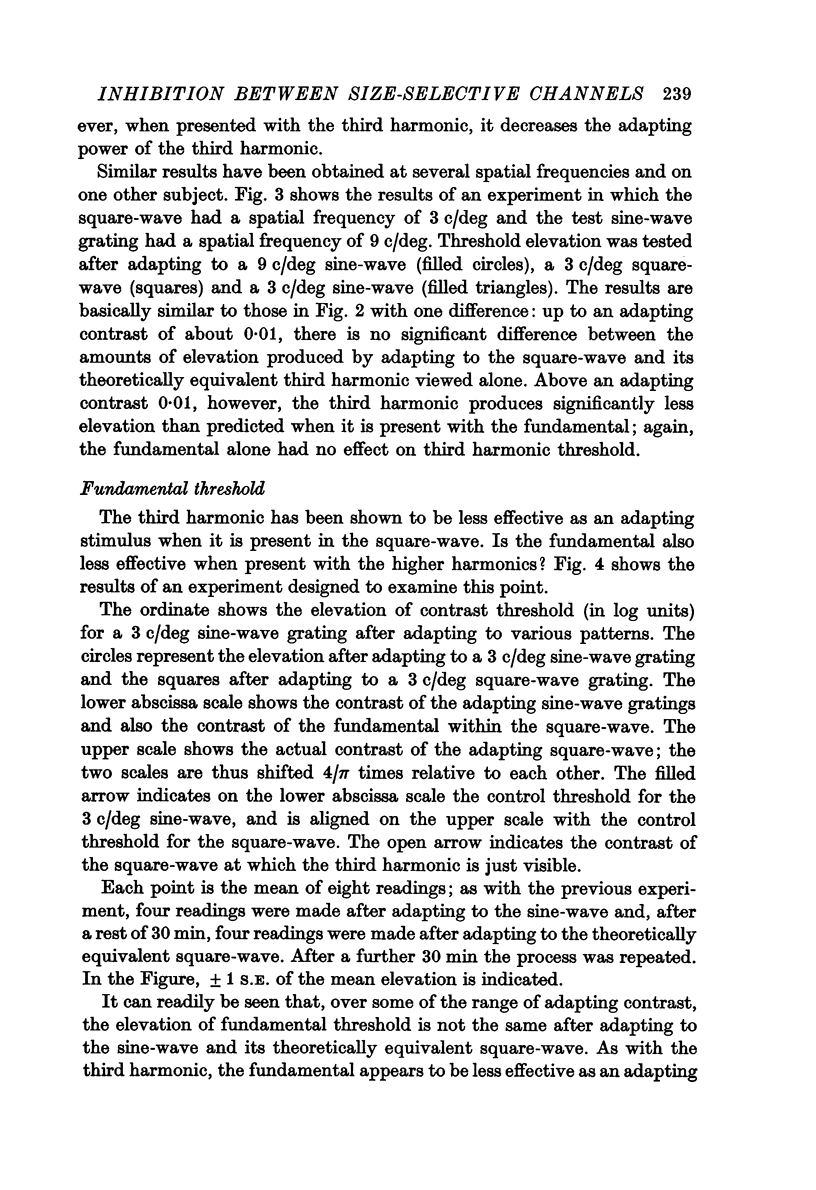

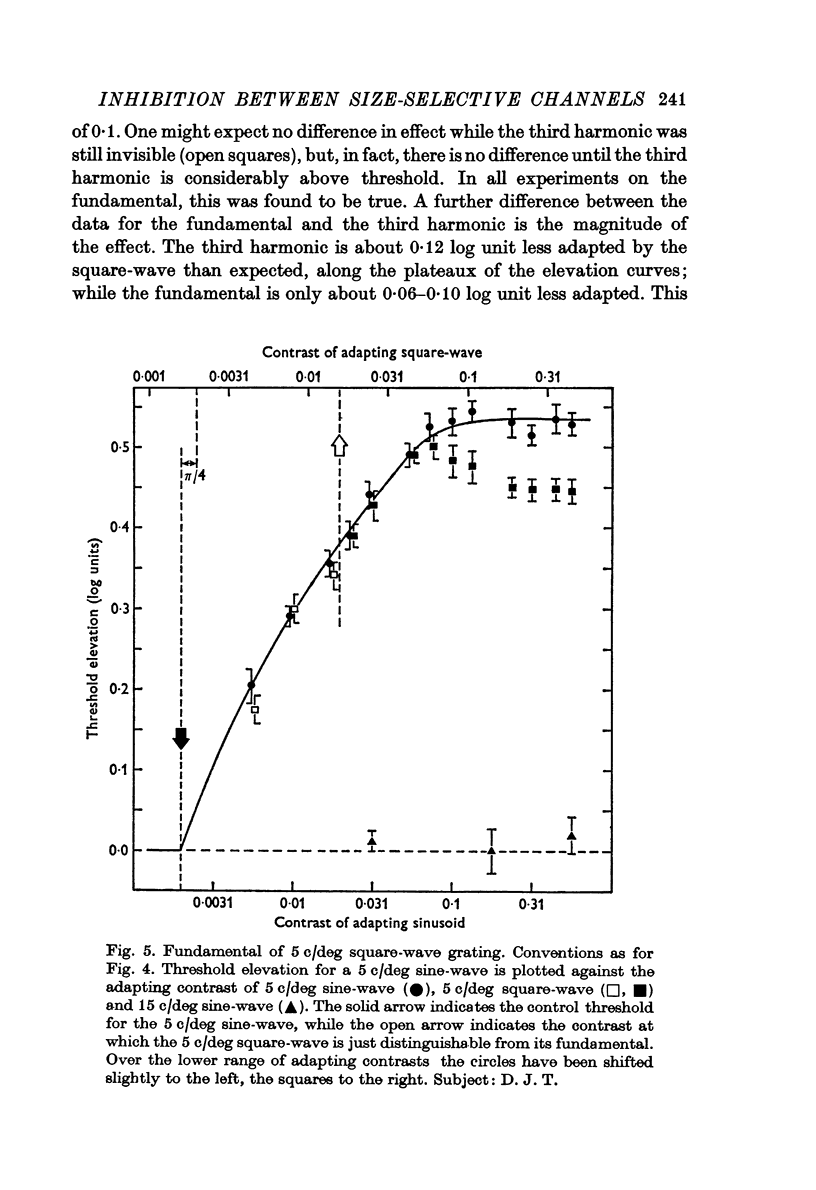
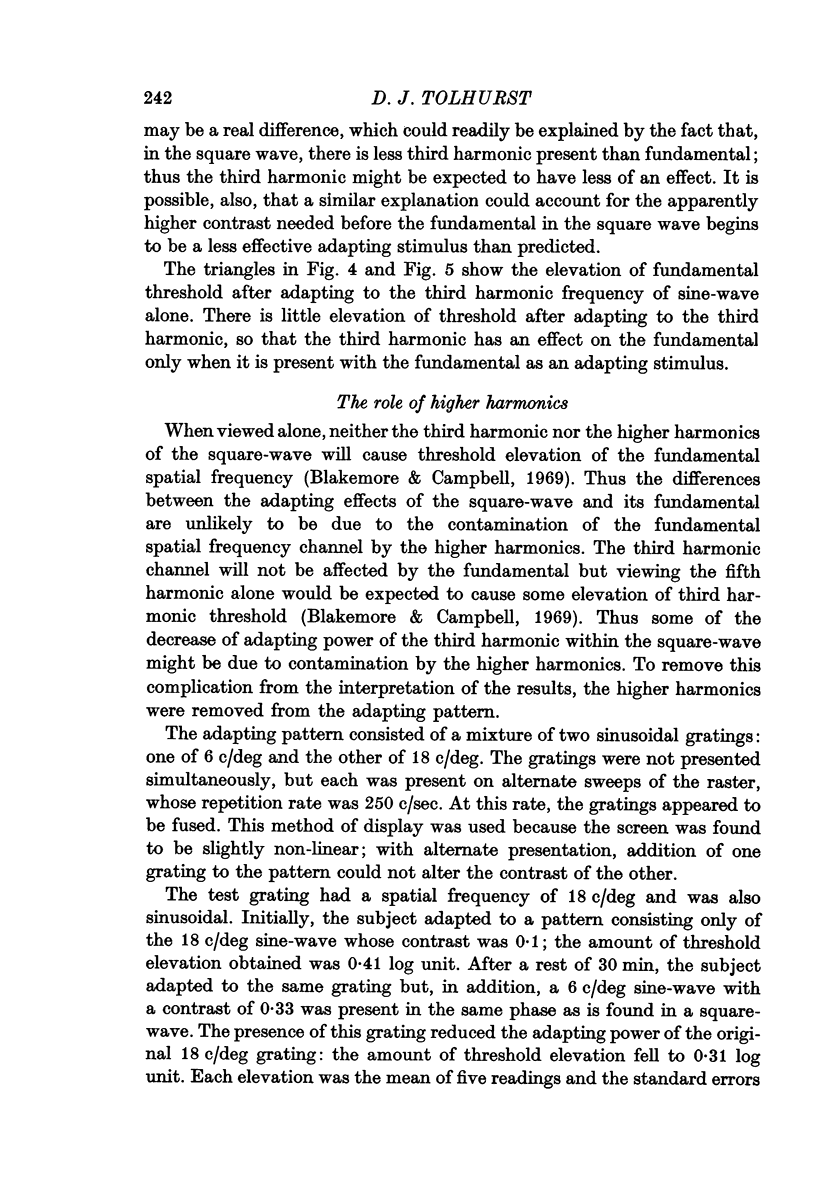
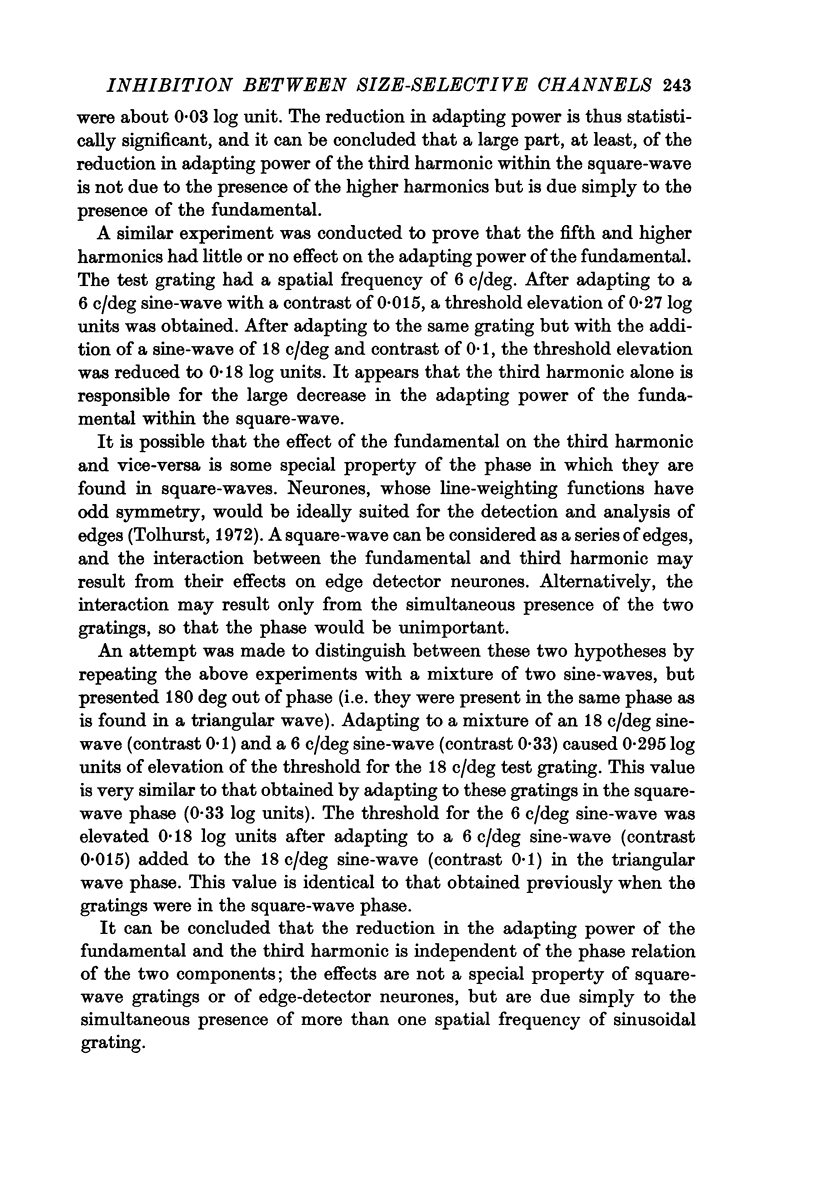
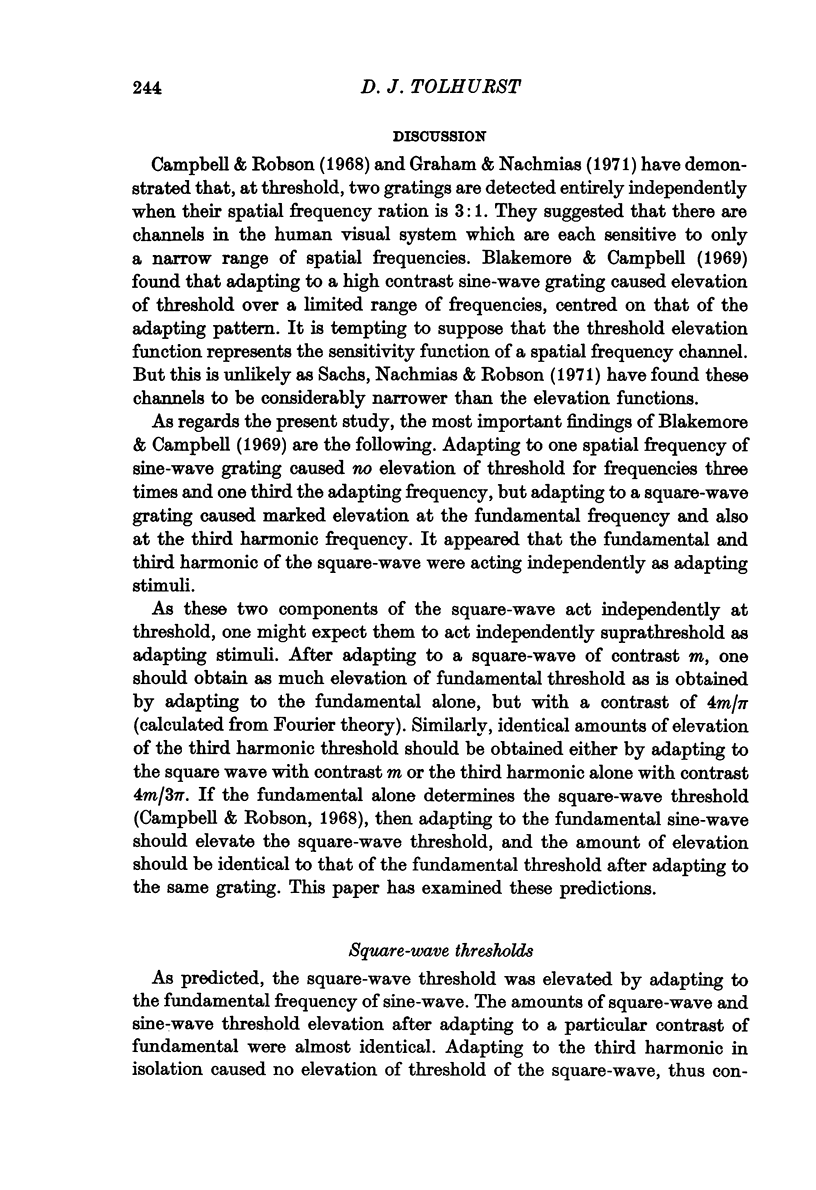
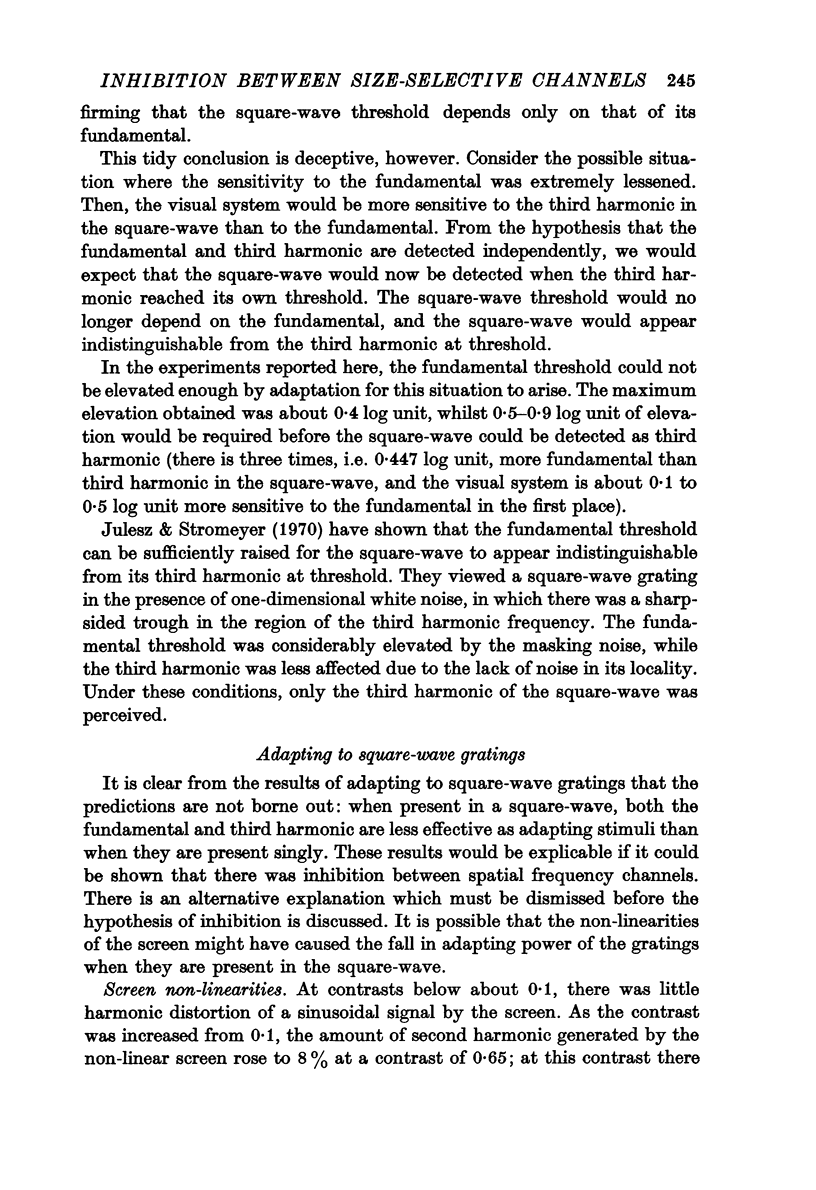

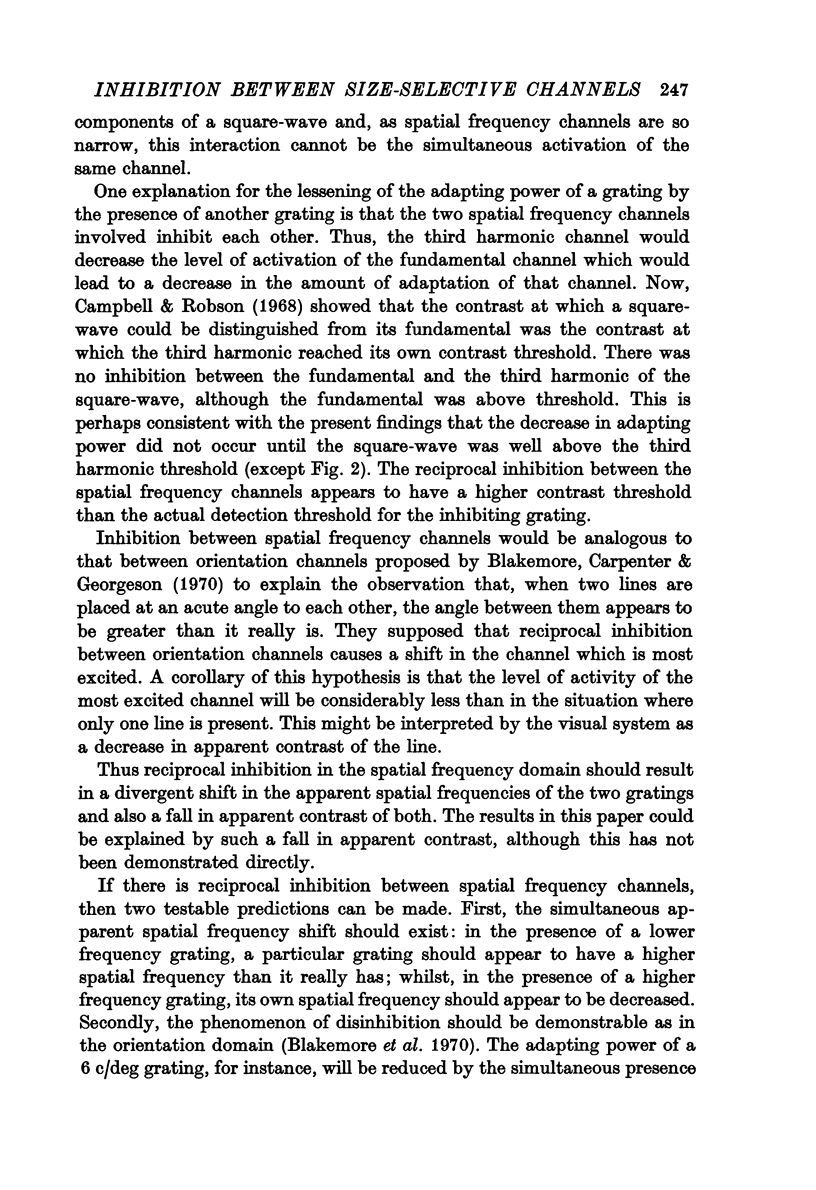

Selected References
These references are in PubMed. This may not be the complete list of references from this article.
- Blakemore C., Campbell F. W. On the existence of neurones in the human visual system selectively sensitive to the orientation and size of retinal images. J Physiol. 1969 Jul;203(1):237–260. doi: 10.1113/jphysiol.1969.sp008862. [DOI] [PMC free article] [PubMed] [Google Scholar]
- Blakemore C., Carpenter R. H., Georgeson M. A. Lateral inhibition between orientation detectors in the human visual system. Nature. 1970 Oct 3;228(5266):37–39. doi: 10.1038/228037a0. [DOI] [PubMed] [Google Scholar]
- Campbell F. W., Robson J. G. Application of Fourier analysis to the visibility of gratings. J Physiol. 1968 Aug;197(3):551–566. doi: 10.1113/jphysiol.1968.sp008574. [DOI] [PMC free article] [PubMed] [Google Scholar]
- Graham N., Nachmias J. Detection of grating patterns containing two spatial frequencies: a comparison of single-channel and multiple-channels models. Vision Res. 1971 Mar;11(3):251–259. doi: 10.1016/0042-6989(71)90189-1. [DOI] [PubMed] [Google Scholar]
- Holmes J. M., Marshall J. C., Newcombe F. Syntactic class as a determinant of word-retrieval in normal and dyslexic subjects. Nature. 1971 Dec 17;234(5329):418–418. doi: 10.1038/234418a0. [DOI] [PubMed] [Google Scholar]
- Sachs M. B., Nachmias J., Robson J. G. Spatial-frequency channels in human vision. J Opt Soc Am. 1971 Sep;61(9):1176–1186. doi: 10.1364/josa.61.001176. [DOI] [PubMed] [Google Scholar]
- Tolhurst D. J. On the possible existance of edge detector neurones in the human visual system. Vision Res. 1972 May;12(5):797–804. doi: 10.1016/0042-6989(72)90006-5. [DOI] [PubMed] [Google Scholar]


